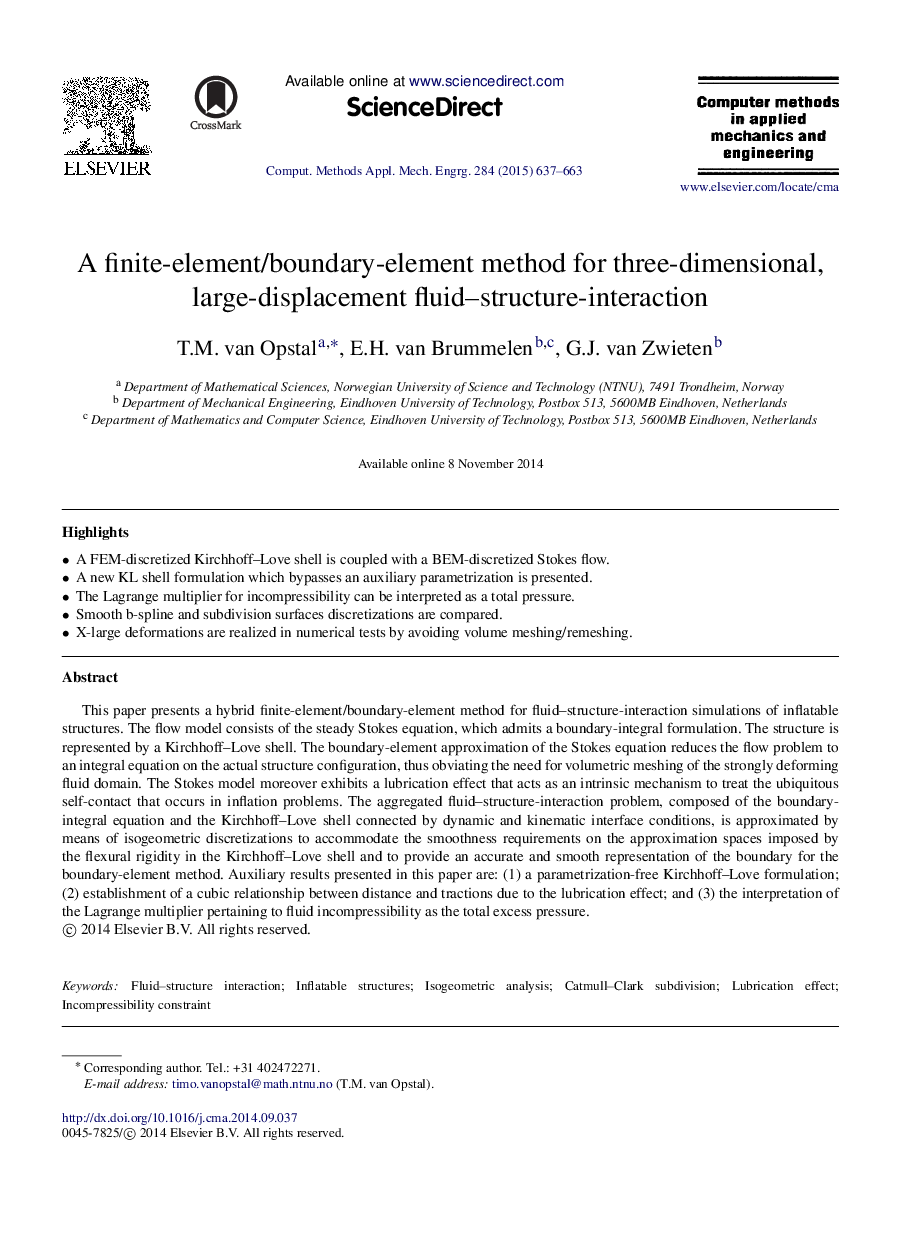| Article ID | Journal | Published Year | Pages | File Type |
|---|---|---|---|---|
| 497801 | Computer Methods in Applied Mechanics and Engineering | 2015 | 27 Pages |
•A FEM-discretized Kirchhoff–Love shell is coupled with a BEM-discretized Stokes flow.•A new KL shell formulation which bypasses an auxiliary parametrization is presented.•The Lagrange multiplier for incompressibility can be interpreted as a total pressure.•Smooth b-spline and subdivision surfaces discretizations are compared.•X-large deformations are realized in numerical tests by avoiding volume meshing/remeshing.
This paper presents a hybrid finite-element/boundary-element method for fluid–structure-interaction simulations of inflatable structures. The flow model consists of the steady Stokes equation, which admits a boundary-integral formulation. The structure is represented by a Kirchhoff–Love shell. The boundary-element approximation of the Stokes equation reduces the flow problem to an integral equation on the actual structure configuration, thus obviating the need for volumetric meshing of the strongly deforming fluid domain. The Stokes model moreover exhibits a lubrication effect that acts as an intrinsic mechanism to treat the ubiquitous self-contact that occurs in inflation problems. The aggregated fluid–structure-interaction problem, composed of the boundary-integral equation and the Kirchhoff–Love shell connected by dynamic and kinematic interface conditions, is approximated by means of isogeometric discretizations to accommodate the smoothness requirements on the approximation spaces imposed by the flexural rigidity in the Kirchhoff–Love shell and to provide an accurate and smooth representation of the boundary for the boundary-element method. Auxiliary results presented in this paper are: (1) a parametrization-free Kirchhoff–Love formulation; (2) establishment of a cubic relationship between distance and tractions due to the lubrication effect; and (3) the interpretation of the Lagrange multiplier pertaining to fluid incompressibility as the total excess pressure.
